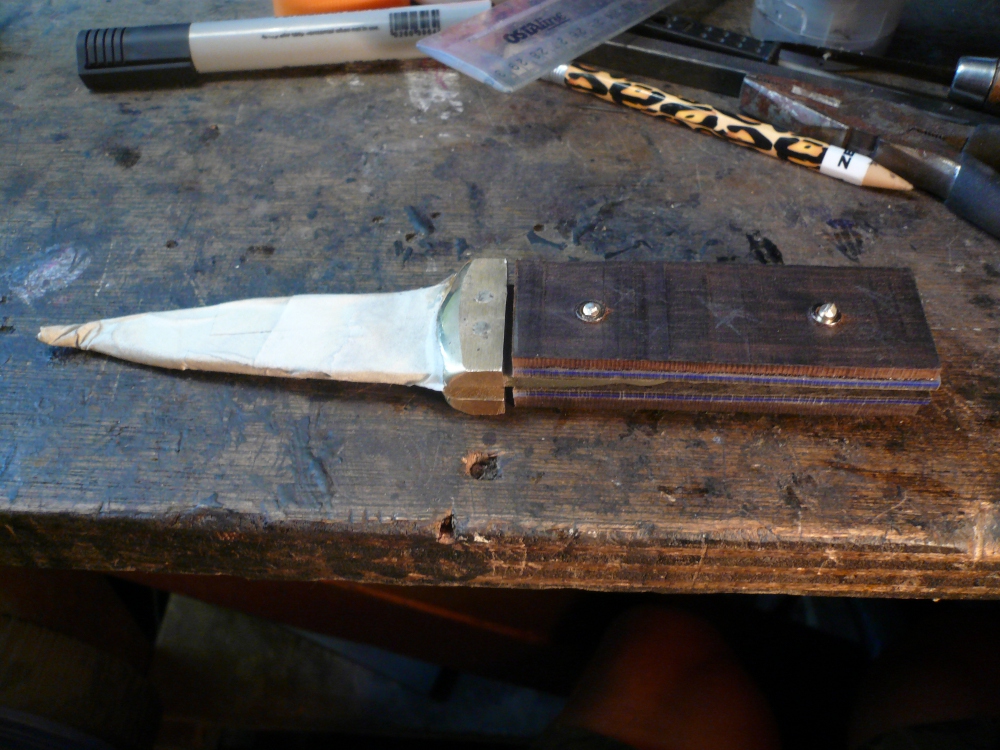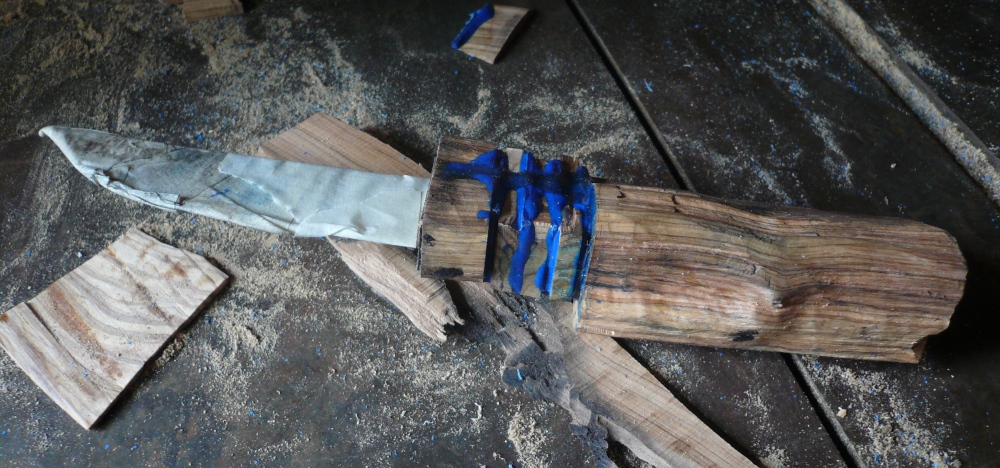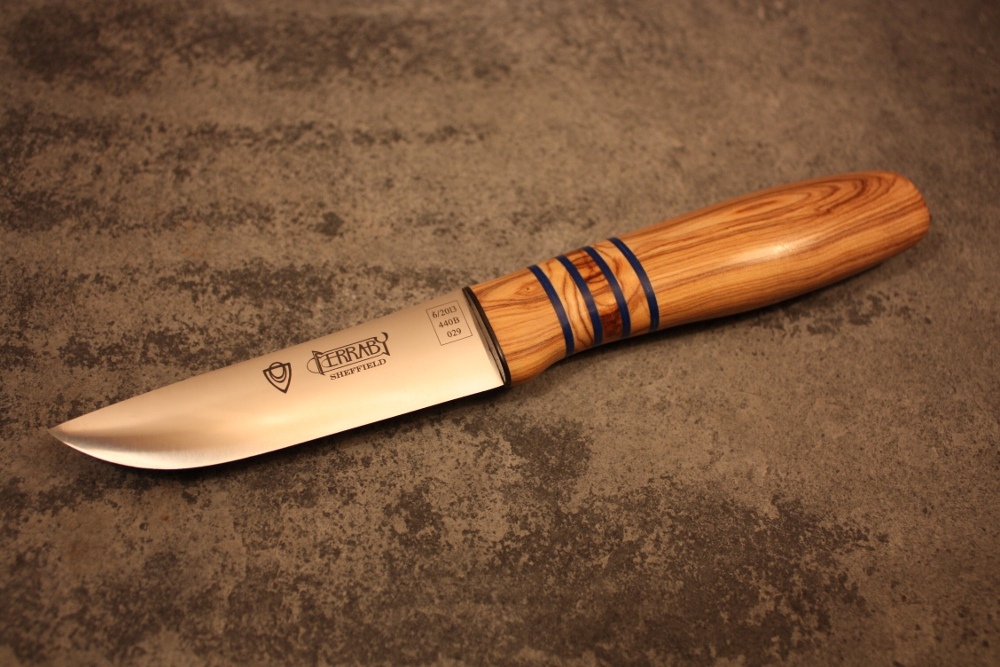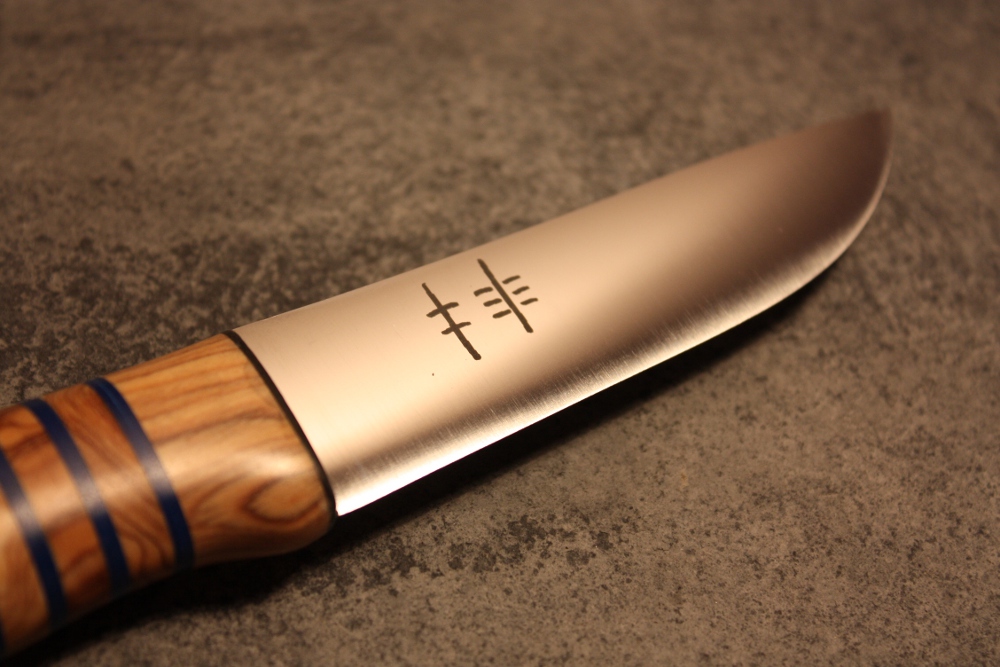
It means 'Black knife' in Celtish, or Secret knife. Well today I will tell you all about this Scottish secret! In olden times when visiting fellow gaelic Crofters, it was deemed polite to leave your sword, axe, bow and knives outside the house to prevent accidents at the dinner table. (Nothings changed there.) However, it would be crazy to be totally unarmed should the house be attacked by baddies. So the Sgian Dubh, usually hidden cleverly under the arm would be tucked into the top of the hose (sock) so it was no longer a consealed weapon and quickly accessable.
The laws are similar today about consealed weapons and so this one will be used by the guy who commissioned this knife to complete his traditional outfit during his wedding!
So here is how I made it...
The laws are similar today about consealed weapons and so this one will be used by the guy who commissioned this knife to complete his traditional outfit during his wedding!
So here is how I made it...
The design needed to have smooth lines and a simple shape. Full tang Sgian Dubh's are unusual but this construction has allowed me to do my signature filework on both sides, making a very strong working knife. Its flat handle shape provides a snug fit into the sock or pocket.
We chose ebony as it fits quite well into the idea of a black knife and blue liners to complement the hints of red brown in the grain. Named by the Ancient Egyptian's as 'hbny,' it is one of the few woods that sink in water and its this high density which gives it such a fine finish. Gives it a good weight in the hand too!
So here it is and I'm very pleased with it, as was the customer who kindly wrote a great review on the Blade forum.
By the way, I always try to source materials ethically and this bit of ebony was given to me by a friend who bought it 15 years ago to make a fret board for his guitar. He thought I would actually make use of it, so thanks to you Jim!
By the way, I always try to source materials ethically and this bit of ebony was given to me by a friend who bought it 15 years ago to make a fret board for his guitar. He thought I would actually make use of it, so thanks to you Jim!

























